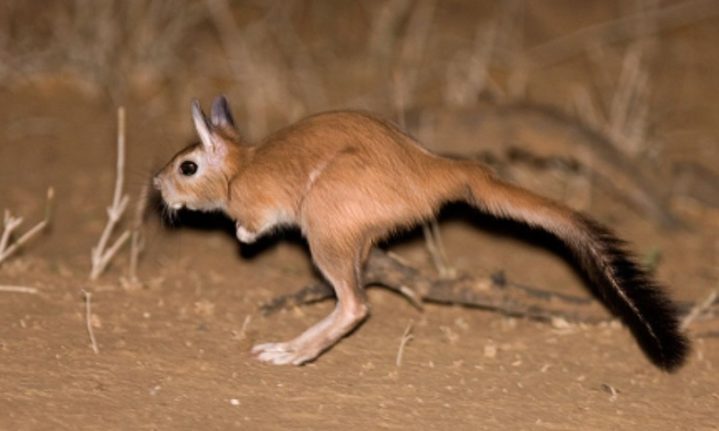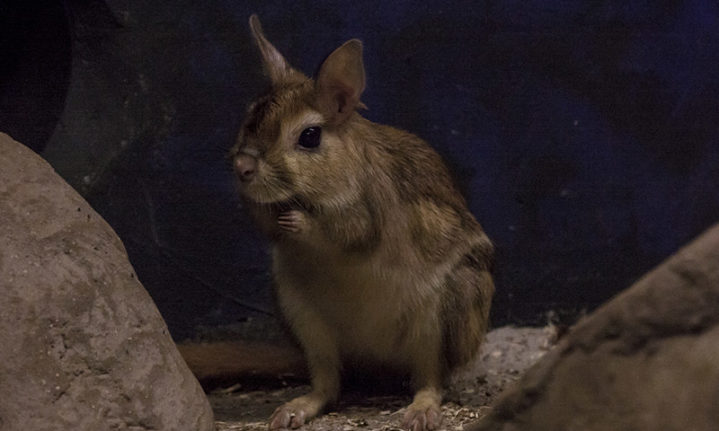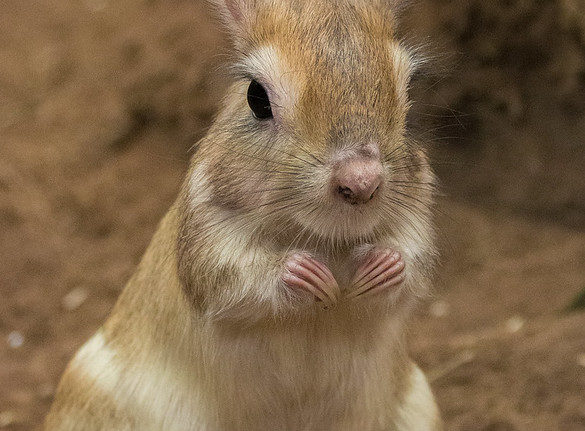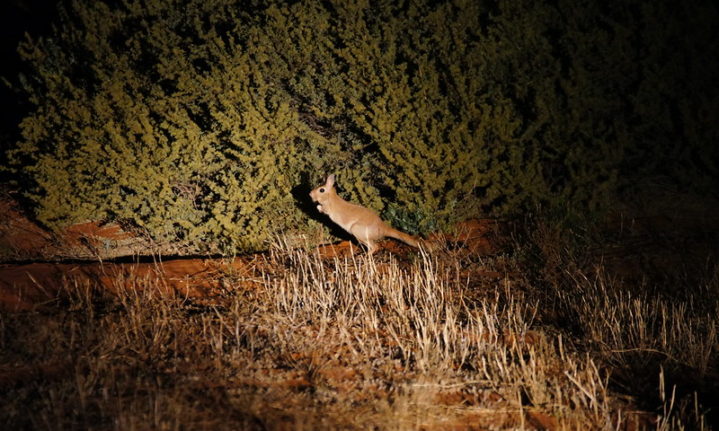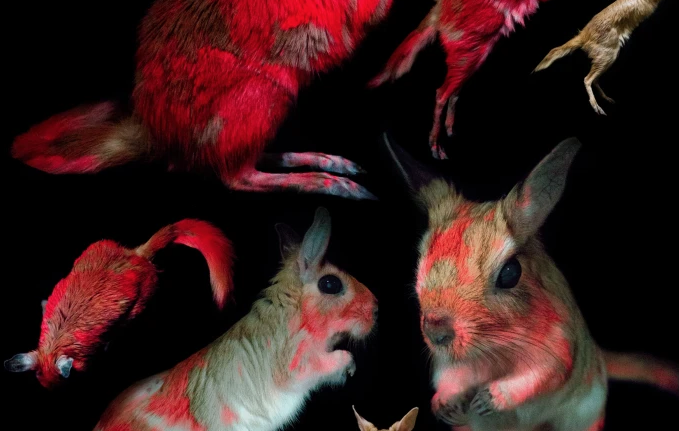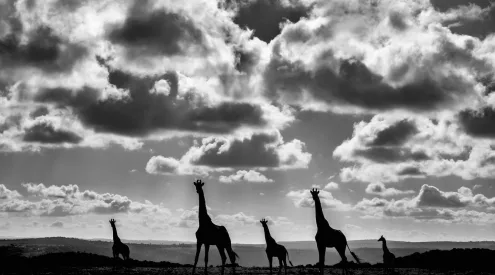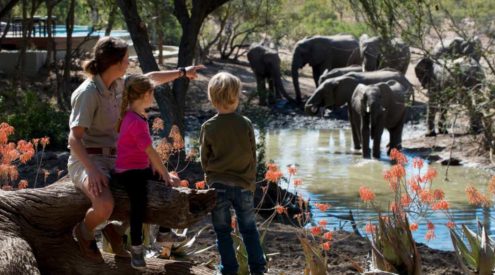Is it a kangaroo? Is it a rabbit? No! it’s a springhare. If you are confused by this animal, not to worry, it’s been baffling biologists for some time. The springhare is an unusual rodent species that looks like a cross between a rabbit and a kangaroo and is also a keystone species in South Africa. Recent research has revealed that they are also fluorescent under UV light.
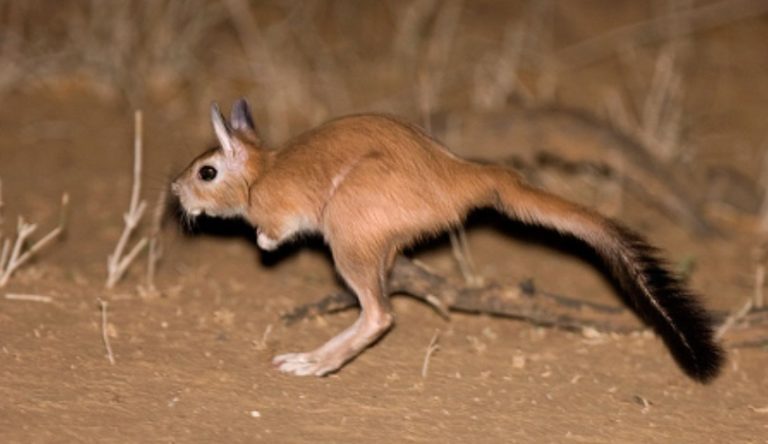
Picture: Wikimedia Commons
A vital part of our ecosystem
It turns out that springhares are keystone species in the ecosystems they occur. A keystone species is a species that has a disproportionately large effect on its natural environment, without it, the ecosystem could dramatically change or cease to exist. What role could a small, obscure species play in an ecosystem? Quite a significant one, evidently.
These unusual animals were once grouped with jerboas (jumping rodents), then porcupines, then scaly-tailed squirrels before they were allotted their own family; Pedetidae. This refers to a family of mammals of the rodent of order, of which springhares are the only living members.
This animal has well-developed hind legs and can jump to a height of 2m. This is impressive when you consider that these diminutive animals are only 35-45cm tall. Weighing in at 4kg, the springhare is a cute-looking creature with reddish-brown to a pale grey and a characteristic black-tipped tail. They are incredibly elusive and difficult to spot, so consider yourself lucky if you see one.
Little is known about this species, but they seem to be abundant and widespread in protected areas throughout their range, which includes savannah and semi-arid regions of South Africa, Nambia, Botswana and Zambia.
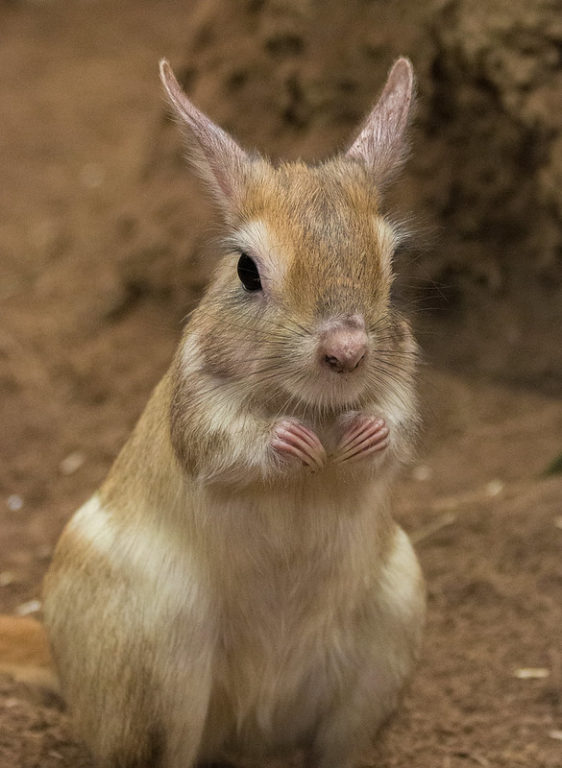
Picture: Hans De Bisschop/ Flickr Commons.
Studies have tried to estimate the living population and based on area surveys, they estimate that there is between 2 million and 11 million springhare in South Africa.
Thanks to its wide distribution and high numbers, the springhare is not at risk of going extinct (classified as least concern on the IUCN red list) but the springhare is a keystone species and thus conserving local subpopulations is important.
Springhare burrows provide shelter and core areas for foraging for at least 20 other mammals, three birds, six reptiles and 22 invertebrate species. This includes other threatened species such as Temminck’s ground pangolin and the black-footed cat. They also form an important prey component within the food chain of all ecosystems they occur.
READ: The rare black-footed cat: the world’s deadliest feline
A better hopper than a kangaroo?
While kangaroos are renowned for their hopping ability, could a springhare outdo them at their own game? Dr Ned Snelling, a senior lecturer in the Department of Anatomy and Physiology at the University of Pretoria’s (UP) Faculty of Veterinary Science, suggests they can.
In a study in the Journal of Anatomy, Snelling and his team assessed the muscle-tendon design of the hindlimbs of springhares and compared it against 16 Australian hoppers (marsupials). What the study revealed is that springhares have specially adapted thicker tendons, which aids quicker and more accelerative hopping
This means that a springhare is a faster and more agile hopper than marsupials and the reasoning for this is that springhares occur in predator-dense environments, requiring quick manoeuvrability to evade capable hunters such as the black-footed cat.
They are fluorescent!
A scientific report published in Nature revealed that their coat glows a patchy pinkish-orange when under UV light.
Fluorescence is a material property where certain pigments can absorb UV light and re-emit as vibrant colours. This characteristic is usually prevalent in some amphibians and scorpions, but it is not usually found in mammals.

Biofluorescence in captive springhare. Picture: Nature scientific reports.
Researchers hypothesise that bioflourescence in mammals may be ecologically important for nocturnal mammals and that it may be more broadly distributed than previously thought.
The paper states that: ‘Our understanding of the visual capacities of various species develops we are realising that many species are capable of seeing the world through a different lens, and that, in addition to or as an alternative to visible light (approximately, 400–700 nm), other wavelengths of light may be ecologically important.’
Springhares are predominantly solitary and forage in open spaces with sparse vegetation, such as the semi-arid regions of the karoo. ‘Thus, we hypothesize that the patchiness of biofluorescence in springhares could function as a camouflage of sorts, but this would depend on the UV sensitivity of their predators.’
With predators such as snakes and cats having a different visual acuity to humans, the biofluorescence could help evade predators by absorbing wavelengths that would otherwise be brightly reflected, and emitting less visible ones. It seems as though biofluorescence serves as a sort of camouflage for springhares, in a world completely out of perceptive ability.
More interesting Facts
- Springhares are the largest hopping rodents in Southern Africa
- Cheetahs have the lowest hunting success rates when pursuing springhares in southern Kalahari.
- Springhares and Australian hoppers (marsupials) last shared a common ancestor about 160 million years ago
- The need for fast, accelerative hopping to survive in predator-dense habitats has taken greater priority during its evolution when compared to a Kangaroo that has to travel long distances.
- For a small animal, they have a surprisingly long lifespan of 13-15 years
- There are currently two species of springhare, the South African springhare and the East African springhare.
Watch their master acrobatic skills in a fight between two springhares in the video below.
ALSO READ









